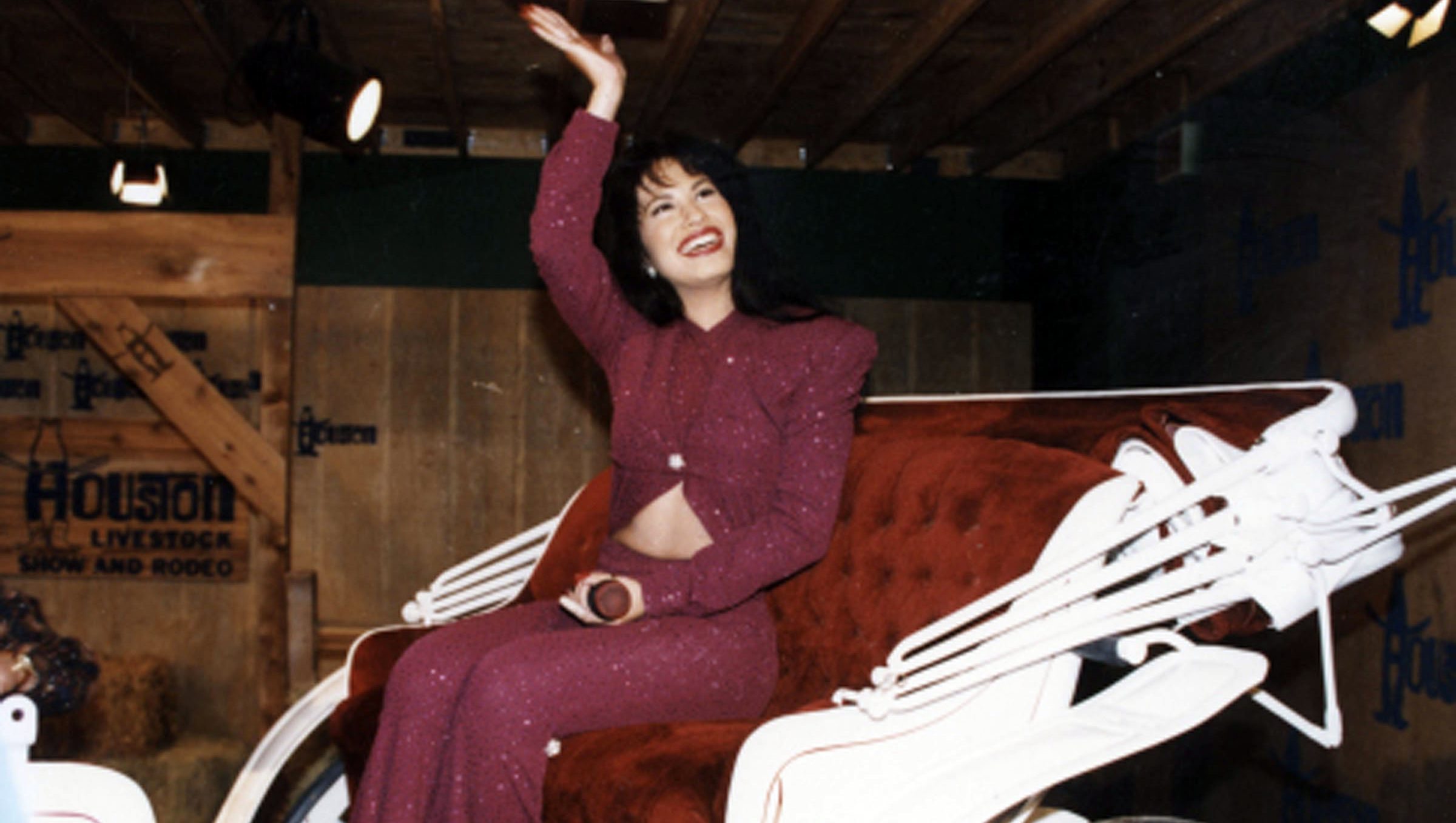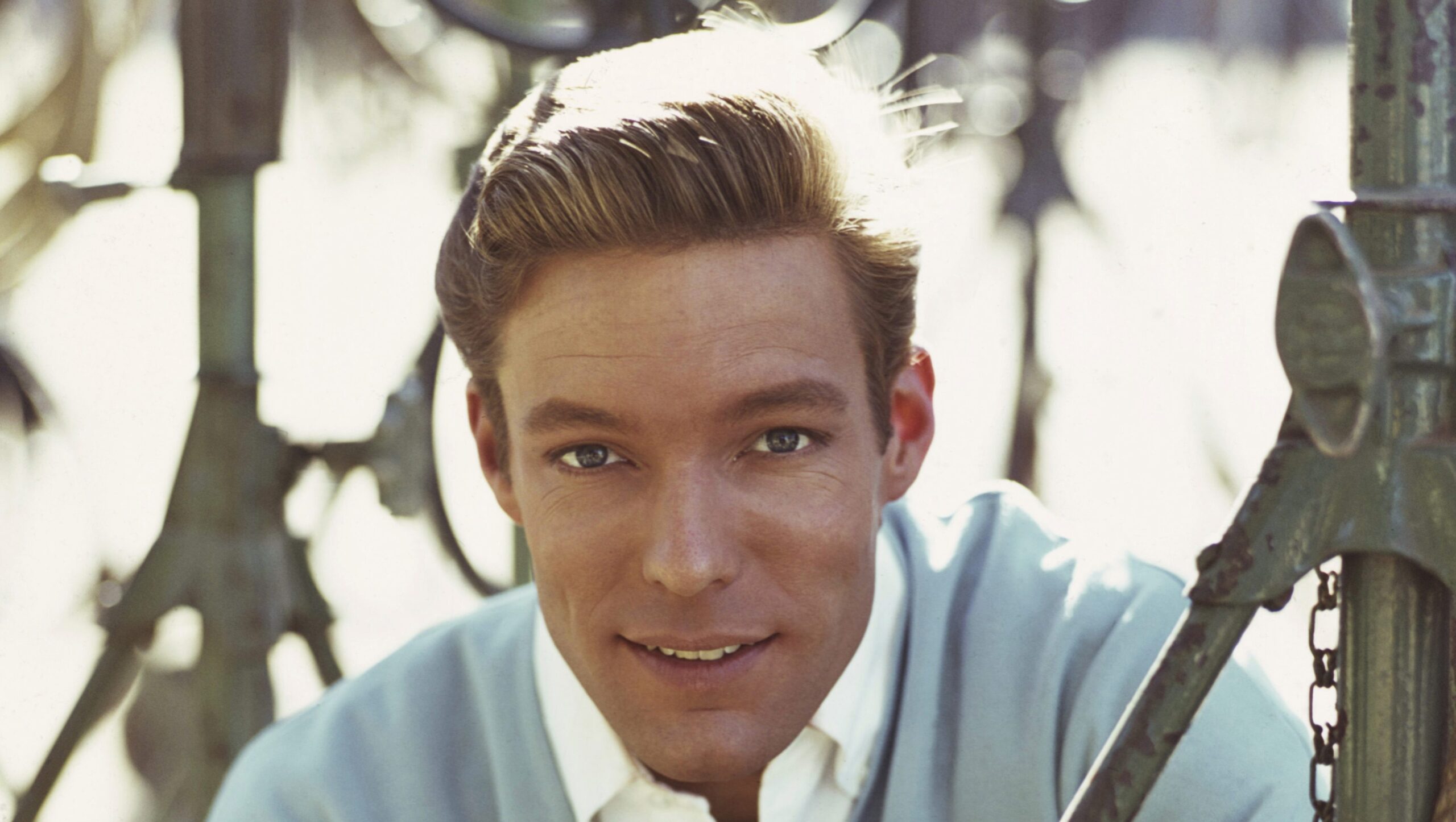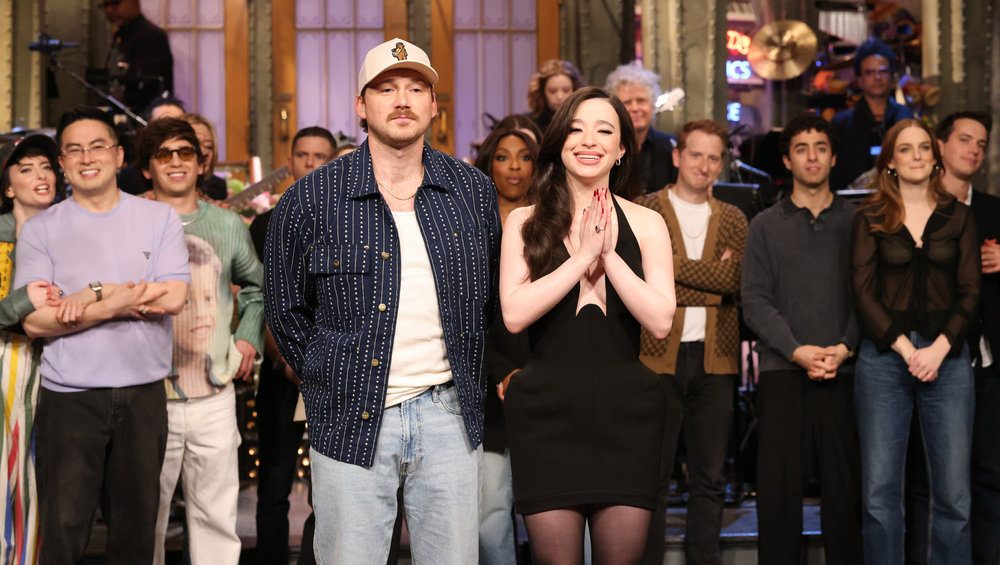Oscar Wilde’s notorious antihero Dorian Grey in all probability would’ve beloved to have a barrage of cameras pointed at him, reflecting his attractive visage. That is precisely what Kip Williams’ tech-heavy new Broadway manufacturing does, with Sarah Snook (“Succession”) starring in all of the roles and surrounded by a group of digital camera operators. Nonetheless, regardless of some fancy digital camera work and close-ups, this manufacturing solely goes skin-deep. Wilde himself was an aficionado of artifice, which makes the irony right here all of the extra painful, since this manufacturing can’t discover any depth in its surfaces.
“The Image of Dorian Grey” — which performed to a lot acclaim in London final 12 months — creatively integrates video, with Snook typically showing on display screen each in simulcast and in pre-recorded bits as different characters. Though know-how is a ubiquitous a part of this manufacturing, the piece has virtually nothing to say about it, aside from acknowledging its mere existence — know-how is said to vainness, and a front-facing selfie digital camera is sort of a mirror. These primary concepts, removed from revelatory, by no means come near the trenchant critiques of hedonism in Wilde’s 1891 novel.
That is the uncommon revival that’s worse for these conversant in the supply materials, who’re certain to be dissatisfied. Williams appears to have essentially misunderstood the novel, or on the very least to have solely a diluted grasp of it. Whereas there’s a basic sense of constancy to the plot, the ultimate product feels wildly completely different from the unique as a result of the manufacturing is performed as a broad comedy. Snook’s varied characterizations, particularly her minor characters, are so caricaturish they veer into British panto. All through, Snook hams for laughs, turning Wilde’s witticisms and epigrams into slapstick. The tone is effectively established however nowhere close to that of the novel; as a substitute of a gothic, nightmarish parable, Williams and Snook deal with it as a frolicking, satirical romp.
Determining when precisely this manufacturing takes place is a shedding battle. Dorian at one level begins utilizing an iPhone, face-tuning a selfie and making use of Snapchat filters as a stand-in for the notorious portrait, which ages whereas Dorian himself stays youthful. It’s unclear if this iPhone is supposed to be diegetic, because the manufacturing in any other case seems to be set (just like the novel) within the late nineteenth century. Later, although, two pre-recorded movies characteristic characters utilizing iPhones; maybe that is an exaggerated model of the story’s time soar, but it’s unclear why the characters are nonetheless in Victorian garments.
It’s a missed alternative to not set this manufacturing in modern-day, which might have allowed it to make extra nuanced factors about social media and its relationship to gender, sexuality, ageing, self-image, physique dysmorphia, and the glorification of youth and wonder.
The costume design (by Marg Horwell) takes a whimsical method to the interval, however finally turns into gaudy and confounding, with Dorian ending in what can solely be described as unhealthy Elvis drag. This look is topped with a swirling pompadour, one of many manufacturing’s many hideous wigs. Essentially the most egregious is the wig Snook wears as Dorian for the primary half of the play, a curly, blonde, clownish mop. It’s utterly flawed for the character, styling Dorian right into a petulant cherub as a substitute of the drop-dead attractive, swaggering intercourse image he’s meant to be in Wilde’s conception.
Whatever the route any adaptation needs to take the story, it’s critical that the viewers is drawn to Dorian: He should have an plain sexual magnetism. Snook’s Dorian, although, has no intercourse enchantment, and the sexual rigidity between Dorian, Basil, and Henry — the core triangular relationship of the textual content — has right here been virtually completely eradicated. The very foundation of “The Image of Dorian Grey” is Dorian’s magnificence; he’s meant to be the exemplar of a Victorian twink whom everybody lusts after. Snook’s Dorian just isn’t an aesthetic perfect — he’s a joke, guffawing as he takes a selfie flashing a peace signal.
Snook’s accent work all through the play – which, to her credit score, contains creating distinct voices for a big selection of characters – does the present no favors. Her Dorian appears like a British youngster in an SNL skit; her “narrator” is a farce of a stuffy English voice-over; her Basil has a shaky stutter; and her minor characters have such exaggerated vocal inflections it seems the one inspiration was to get laughs.
The duty for Snook right here is in no way simple. Nonetheless, in tackling it, she flattens a lot of the characters into meaninglessness, unable to seize their complexities. The broad arc she creates for Dorian doesn’t completely work, since Dorian is supposed to be unchanging outwardly. Her efficiency will get laughs from the viewers, however she doesn’t encourage introspection or convey any of the deeper themes of the piece — as a substitute choosing bodily and vocal gymnastics, pausing for applause after every bit.
In a stunning transfer, adjustments and deletions within the textual content have made this “Dorian Grey” far much less queer than its supply materials. An uninformed viewers member may depart the play with out even understanding that Basil, Henry, and Dorian are themselves all queer. All that continues to be is a single euphemistic speech of Basil’s itemizing some gossip and tragedies surrounding Dorian, lamenting, “Why is your friendship so deadly to younger males?”
Crucially, when the novel was printed it was seen as so explicitly queer that textual content from “The Image of Dorian Grey” was used throughout Oscar Wilde’s trial as proof of his homosexuality and supposed immorality and perversion. Simply as Wilde’s novel was censored by its unique editor, the play removes among the most clearly queer passages, together with when Basil admits to Dorian, “It’s fairly true I’ve worshipped you with much more romance of feeling than a person ought to ever give to a pal. By some means I’ve by no means beloved a lady.”
Likewise, Williams has made some questionable artistic decisions in relation to the manufacturing’s non-textual representations of queerness. As Dorian goes on a wicked “odyssey of the senses,” Donna Summer time’s “I Really feel Love” performs. The track, the primary disco hit and an indelible homosexual anthem, right here looks like a pandering cliche.
Later, Dorian visits an opium den, which Williams transforms right into a modern-day nightclub, full with techno, strobe lights, and a homosexual character smoking from a crystal meth pipe. Whereas there’s an argument to be made for the historic parallel, the truth that one of many solely specific representations of up to date queerness is meth dependancy doesn’t communicate effectively to the manufacturing’s sexual politics.
A key side of the novel is its exploration of queer masculinity on the finish of the nineteenth century, a interval that noticed the rise of dandy vogue and aestheticism. This complicated nexus has been oversimplified right here into the universalized idea of vainness. The manufacturing turns away from each queerness and masculinity, as evidenced within the casting of Snook.
One other illustrative second happens when, within the novel, Basil admits his love for Dorian and Dorian reveals him the portrait, then murders him — a scene that may be learn as a gay-panic murder. Right here Basil’s declaration of affection has been reduce and Dorian’s stabbing turns into comedy as he pouts within the mirror, and afterwards Snook does a lip-sync dance quantity (with digital camera operator backup dancers) to “Beautiful” from The Apple Tree, full with the lyric “There’s this avalanche of magnificence in a single girl and I’m it” and Dorian throwing confetti. It’s decisions like these that spotlight how far the manufacturing tonally diverges from the novel, and the way little this manufacturing cares about queerness or masculinity.
A big portion of the present options pre-recorded snippets of Snook as varied characters, and though the actress by no means leaves the stage, it’s arduous to not really feel a bit cheated. In any case, we come to the theater for dwell efficiency. Whereas there’s an excessive amount of simulcasting, the usage of know-how is extra rooted right here in pre-recorded materials, serving to resolve the logistical puzzle of getting Snook play all of the roles. This will get at a a lot greater subject: This manufacturing fails to justify or clarify why it is a one-person present or what’s gained by this selection.
At its core, then, if the manufacturing doesn’t make the most of its know-how for commentary and is hampered relatively than strengthened by its single-actor format, what’s left? The very premise of the manufacturing is a gimmick, a option to let an actor showcase and dazzle the viewers with some methods. It’s an empty spectacle, although, and it stays unclear what – if something – the manufacturing is making an attempt to say aside from that vainness is unhealthy. Wilde himself wrote that we should always not kind issues into good and unhealthy, however charming and tedious; this manufacturing falls squarely with the latter.
The post Sarah Snook Stars on Broadway appeared first on Allcelbrities.








